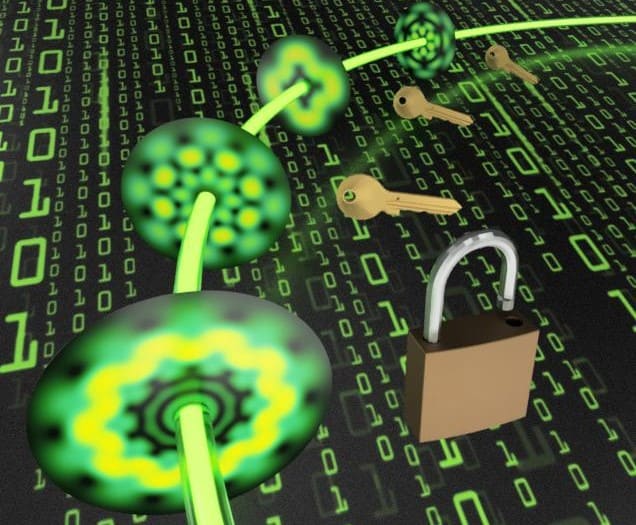
Party line: the new protocol allows 10 parties to share information securely. (Courtesy: University of Witwatersrand)
Topics: Cryptography, Quantum Computer, Quantum Mechanics
A “quantum secret sharing” scheme that allows 10 parties to share information securely – the highest number so far – has been developed and demonstrated by researchers in South Africa. The protocol involves each party performing quantum operations on the photon without measuring its state and the team says it could help increase both the rate at which data is shared on secure quantum networks and how many parties can be involved in the sharing.
In the original quantum key distribution (QKD) protocol, two parties, known as Alice and Bob, communicate by exchanging photons polarized in one of two possible bases over an untrusted link, each varying the polarization basis of his or her transmitter or receiver randomly. At the end of the transmission, Alice and Bob reveal to each other which basis they used to measure the photons sent and received, but not the result of the measurements. Alice and Bob then announce their results for a sample of the photons in which they measured in the same polarization basis, to check that the emitted polarization always agrees with the received one. If it does, they can use the remaining photons that they measured in the same basis to form a secure cryptography key that allows them to communicate securely using conventional telecoms technology. A third party that intercepts the photons inevitably disturbs their state, so some of Alice and Bob’s measurements disagree and they know the line is bugged.
‘Quantum secret sharing’ scheme allows 10 parties to communicate securely, Physics World
Comments